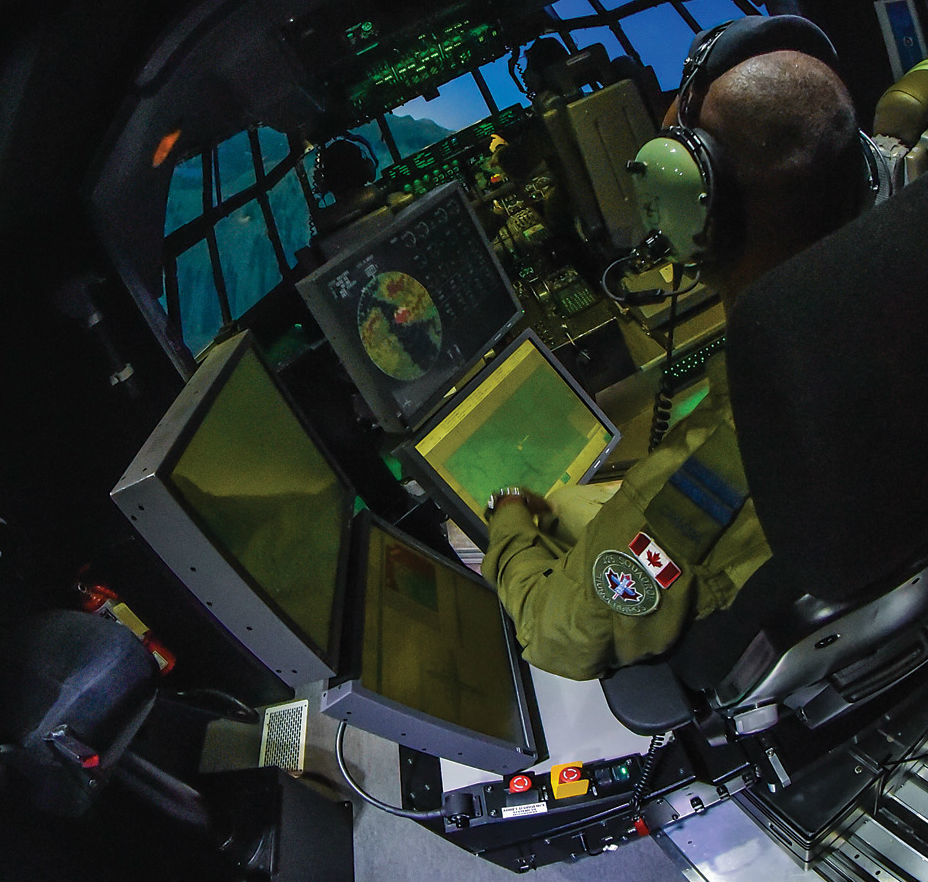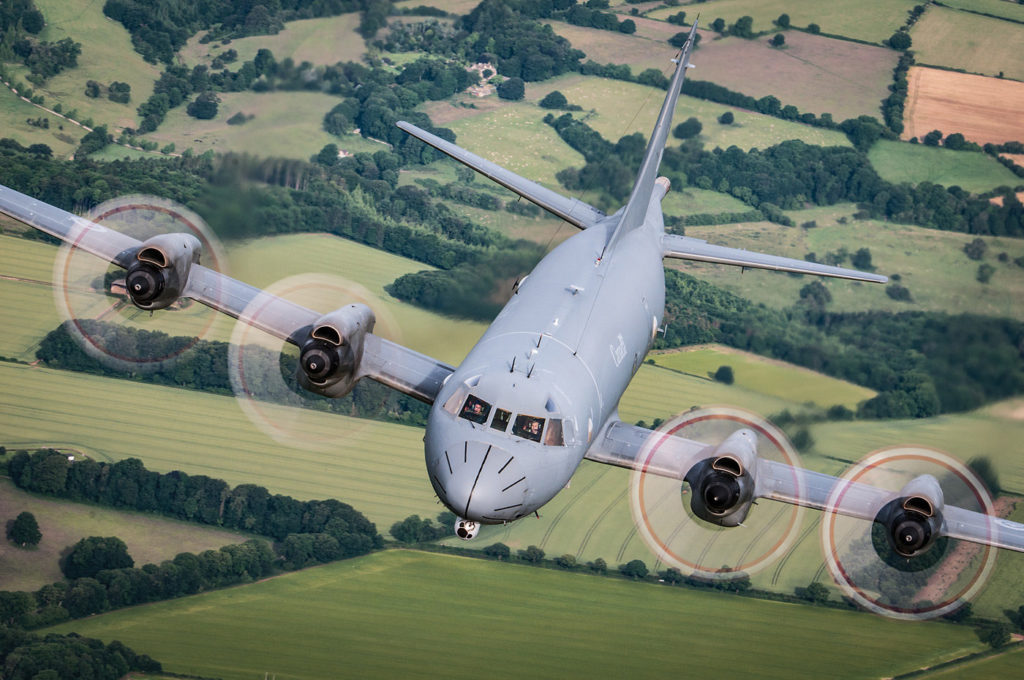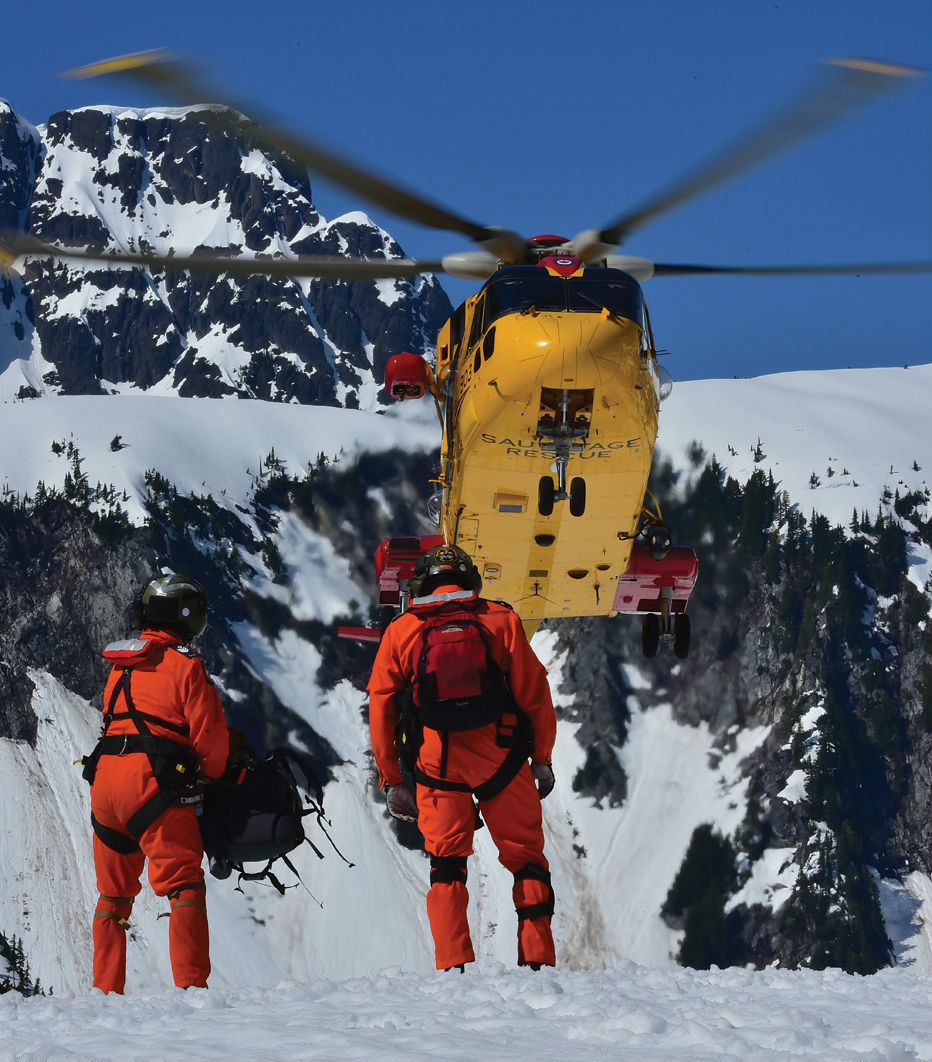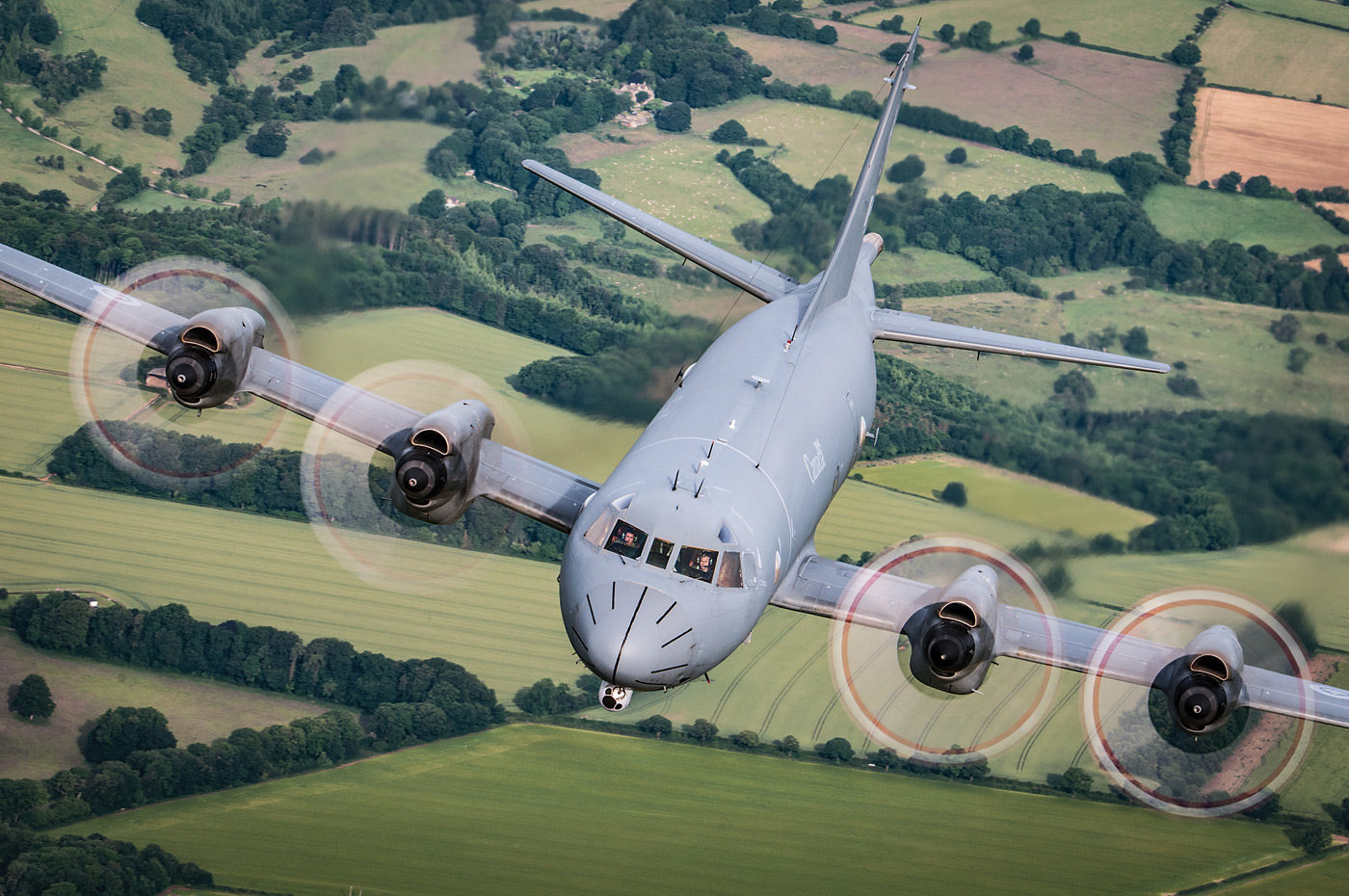Estimated reading time 12 minutes, 7 seconds.
When Ashton Carter was sworn in as U.S. Secretary of Defense, he urged the Pentagon to “think outside this five-sided box” and set about, as one of his top priorities, “stoking its innovative culture.”

Along with renewed investment in research and development, Carter stood up the Defense Innovation Unit-Experimental, or DIUx, an initiative to accelerate the growth of new capabilities for the warfighter by connecting the Pentagon with technology hubs in Silicon Valley, Boston and Austin, Texas.
“We cannot afford to be bureaucratic, too slow to act or risk-averse, nor to discourage thinking differently,” he wrote recently to explain his approach to encourage more innovation.
LGen Mike Hood may not have had Carter in mind when he assumed command of the Royal Canadian Air Force (RCAF), but he has followed a similar path in pursuit of instilling an innovation culture.
Like Carter, Hood can recall a not-too-distant past when the RCAF was a leading institution for innovation, breaking new ground with the Avro CF-105 Arrow, the G-suit, and space technology.
“We have kind of lost our innovative edge as we downsized through the years and focused on our core operational piece,” he said in a recent interview with Skies. “I believe to be successful in the future, we have to become a lot more innovative.”

Not surprisingly, then, his top priority isn’t a complex deployment or a hot-button procurement project. While those are certainly a constant on his radar, he has faith in the people around him to manage the issues of the moment. Instead, Hood’s focus is squarely on the air force of 2030.
“My watch is about making sure the institution is capable of managing future challenges,” he said.
And as the RCAF transitions to new fleets of fighter jets, strategic airlift, ISR (intelligence, surveillance, reconnaissance) platforms, aerial refuelling, search and rescue, tactical aviation and even unmanned systems, all of which herald massive leaps forward in technology and capacity, Hood believes there is an opportunity to reconnect with that innovative past.
Providing, of course, he has the right culture to achieve that goal.
TECH HUB
The first signs of a cultural shift are already taking shape. As part of a broader effort to “flatten” the organization and encourage the flow of innovative ideas from all ranks, Hood introduced a Vector Check that draws inspiration from the popular TV show, Dragon’s Den. About once a month, senior leadership gather via videoconference to hear 10-minute pitches about ongoing projects and new initiatives. It is an opportunity to ensure a project is on the right track and has leadership investment. But it’s also a means for new or better ways of doing something to surface, with ideas coming from headquarters to the flight lines.
More recently, Hood kick-started work to establish an air force innovation hub in the heart of the Region of Waterloo’s technology triangle, acquiring space in Communitech, an ecosystem of start-ups, global companies, academia, government, and tech incubators and accelerators.
The goal isn’t necessarily to solve the air force’s technology challenges, though all solutions will be welcomed, but rather to immerse up to eight non-commissioned and junior officers at a time for a three-month period in an entrepreneurial environment where they can learn best practices and develop “an innovation mindset.”
“The ecosystem is incredible,” said Hood. “It is probably in the top three places in the world for start-ups and innovative approaches. And I want to tap into that.
“Maybe we will give them some vexing problems to tackle, but it is more about creating the culture that these people are then going to bring back to their organizations.”
As an example, he pointed to communications in the Arctic. At present, signals intelligence gathered at Canadian Forces Base Alert is microwaved 500 kilometres south before it can be linked with a satellite and transmitted to Ottawa, and even then the satellite dish is pointed at 90 degrees.

“Imagine operating UAVs [unmanned aerial vehicles] and prosecuting warfare in the North and the information challenges around that,” he said. “I don’t know how we are going to solve that yet, but I am trying to build the culture where we can be ready if that need arose.”
He has also negotiated fellowship programs at two Canadian universities and secondments at several technology companies, including Open Text, a company with which he once spent a semester, to give mid-career officers and non-commissioned members educational and work experiences that could return more creative thinking to the air force.
Hood is fully cognizant that much of this is counterintuitive to a chain of command that thrives on hierarchy. But after a tour of Communitech and facilities at the University of Waterloo, the conversation among his general officers convinced him the approach could work.
“I’m prepared to invest some energy and if we fail, it’s fail fast and on to the next good idea,” he said. “But I can tell you that all of the general officers in the air force are encouraged and supportive. To have the culture I want, I believe [this technology hub] is going to be an important facet of preparing the air force for 2030.”
The focus on innovation comes as the RCAF “rebalances” some of the functions of its three core pillars: 1 Canadian Air Division, which, in addition to being the Joint Force Air Component Commander for operational deployments and the commander of the Canadian North American Air Defense Region, is also responsible for the force generation of equipment; 2 Canadian Air Division, responsible for training and education; and the Canadian Forces Aerospace Warfare Centre (CFAWC), its doctrine, concept development and experimentation centre.
The arrival of new fleets of aircraft with more advanced sensor suites and the torrent of data they are generating will cut across all three pillars, affecting warfighting capabilities, training, and future operating concepts. The RCAF has long held that every platform is a sensor and every sensor is a node on its network, putting a premium on data collection, analysis and dissemination, as well as the strength of the network architecture that supports those functions, even as quantum computing threatens to shatter the ability to protect that data. But optimizing an air force for the digital age means rethinking traditional roles and responsibilities.

“I talk about the RCAF as the guarantor of Canadian sovereignty. Today that is a physical presence,” Hood said. “In 2030, it may be that data sovereignty is more important than actual sovereignty. And ensuring the movement and integrity of all that information is a challenge that I don’t think many of us fully comprehend.”
As a result, the air force is examining the amalgamation of trades such as signals, communications and electronics, navigation, electronic warfare, air weapons control and unmanned systems into a more “fulsome warfighting trade.”
“I can conceive that they may be the most important warfighters in the air force in 2030, not the fighter pilot,” he said. “Although all of those trades will have bespoke things that they will do, the warfighting domain that RCAF air power is operating in is much broader and everyone needs to have an understanding of that.”
That digital imperative is also driving changes to the RCAF’s Future Aircrew Training (FacT) Project, which will bring the training of pilots, air combat systems officers and airborne electronic senor operators under one cohesive umbrella–whether or not Canada eventually acquires the Lockheed Martin F-35A Joint Strike Fighter as its next-generation fighter jet.

“We are beginning to imagine how all of those pieces are going to fit together,” he said. “Fifth generation is a huge forcing function on many air forces around the world. The Australians have tackled this with their Plan Jericho, which outlines how they are going to operate and fight in a fifth-generation environment. As an interoperable air force, I need to be able to do the same thing irrespective of where we are with fifth generation as a potential.”
RENEWAL AND ACQUISITION
As one might expect, Hood has been primarily focused on the people side of the innovation equation. In part, that’s out of necessity. Changes to culture and internal policies will be critical if the RCAF is to meet the expectations of the millennial generation it must recruit. And with so many aircraft fleets in some stage of transition, including the delivery of new fleets, the training system will require further investment.
For Hood, the influx of new aircraft and young, digitally inclined people means the air force is growing, a vastly different position from his recent predecessors who have managed declining budgets and personnel. It’s also an opportunity to assess the technology requirements of new and future platforms to push the innovation agenda further.

As 2016 came to a close, the federal government announced a three-pronged approach to the replacement of its 35-year-old fleet of CF-188 Hornets: a program to extend the structural and operational life of the current fleet of 76 fighter jets for 10 to 15 more years; an open competition to select the Hornets’ eventual replacement; and the start of negotiations with the U.S. government and Boeing Defense and Space on the possible acquisition of an interim fleet of 18 F/A-18 Super Hornets.
The need for an interim fleet is based upon the Liberal government’s interpretation of existing policy–namely, that Canada must be able to meet its NORAD and NATO obligations simultaneously.
That means that whatever fighter eventually replaces the Hornet, the total requirement would exceed 65 aircraft. (The previous Conservative government had proposed acquiring 65 F-35As.)
The CF-188 Hornets are but one of several aircraft fleets the RCAF is either preparing to replace or upgrade. In December, the government signed a contract with Airbus Defence and Space for delivery of 16 C295W search and rescue aircraft, a new training centre and up to 20 years of in-service support to replace the CC-115 Buffaloes and CC-130H Hercules. As with new fighters, enhanced sensors and radar will “fundamentally change the search and rescue enterprise,” said Hood.
After once being dubbed the worst defence procurement in Canadian history by former Defence Minister Peter MacKay, the CH-148 Cyclone maritime helicopters are now well into test and evaluation, and impressing crews with their anti-submarine and above-water warfare suites.

JUSTAS, the joint unmanned surveillance and target acquisition system, is again a growing priority as shipping and other activity increases in the Arctic. The tentative date for a contract award is 2021, but Hood would be “keen” to accelerate the program if possible. Public Services and Procurement Canada sought new costing information from industry in January 2016, and Hood said the Defence Policy Review (DPR) might provide an indication of how the government would like to proceed, including whether to acquire separate domestic and expeditionary UAVs or compromise on a single system.
His most intriguing program, however, might be a future ISR platform. As the CP-140 enters the fourth, and final, block of the Aurora Incremental Modernization Project, which will deliver beyond line-of-sight satellite communications and Link 16 tactical data exchange, Hood is already looking to what comes next when the platform retires around 2030. He has challenged his team “to imagine how we continue to develop the world-leading ASW capability and put that into a Canadian platform” such as a Bombardier C Series or Q400.
“Why do I need to go anywhere else? We have it right here,” he said. “The technology needs to continue to develop and it will. I should be starting to do some experimentation now.”
Adopting a Canadian-built aircraft into the RCAF’s next ISR platform is but another example of his broader innovation agenda.
“I want to be at the leading edge of that,” he explained. “I want to be working with Canadian industry, favouring Canadian industry, and I want to create that innovation culture to maybe get the RCAF back to where it was at one point in time where it drove a lot of the innovation. That is a laudable goal but I’m under no illusions about how hard it will be to get there.”


Canada has fallen woefully behind countries like Australia in putting the pieces in place to ensure that their military is a fully functional, integrated 5th generation military force. Gen. Hood seems like he may be the kind of person who can help get the CAF moving in that direction. Of course it will also take resources – lots of resources, such as the Australians have already committed to. If I see one flaw in Gen. Hoods approach it would be the overarching idea that as many platforms as possible should be homegrown. As laudable as that may seem at first blush, it is a pitfall that many countries have fallen into. Such a default approach often ends up costing precious time and resources in fielding critical systems, as well as producing platforms that are inferior to off the shelf equipment that is already developed and proven. We are seeing some of this in Canada’s effort to modernize its navy. The Aussies have learned that lesson as well, and as a result they are at least a decade ahead of the Canadians in terms of forming a small but potent military that can punch well above its weight. I wish Canada well in their endeavor to modernize their armed forces, as the world certainly needs such an important country to contribute its fair share in an increasingly dangerous world.